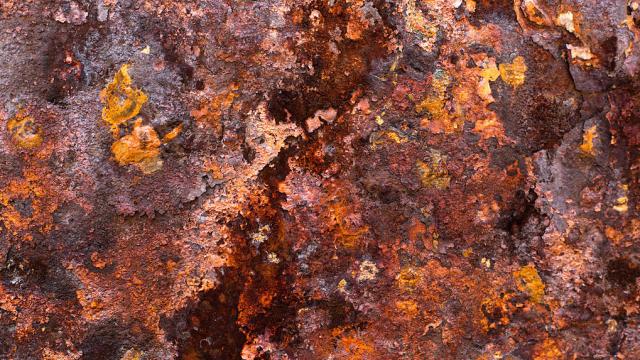Scientists have created perhaps the most detailed view of the rust formation process yet, according to a new paper published in the Proceedings of the National Academy of Sciences.
Rust is the result of a well-known chemical reaction in which iron turns into iron oxide in the presence of water. Rust can be a menace, leading to corrosion and weakening the strength of anything made with iron or steel. Rust has caused many deadly disasters, from bridge collapses to oil spills.
Though rust is a familiar sight, it’s rather difficult to figure out, so scientists have now studied the way it develops atom by atom.
“How atoms are physically attaching onto the rust isn’t well known,” Sandra Taylor, postdoctoral researcher at Pacific Northwest National Laboratory, told Gizmodo.
The researchers created microscopic rods out of goethite, a key mineral component of rust, and reacted them with water dissolved with iron atoms. Some of these dissolved iron atoms had an extra neutron in their nucleus, allowing the scientists to keep better track of how they attached to and entered the nanorods. Then, they imaged the reaction using atom-probe tomography, or APT, which can discern the individual atoms’ identity and positions.
Three-dimensional reconstructions revealed the dissolved iron atoms attaching at specific sites on the microrods, places where there were defects in their lattice-shaped crystal structure, akin to a missing brick or a cut in skin. It appears that the goethite attempts to repair itself by taking iron from the environment, acquiring even more iron atoms and more rust in the process, said Taylor. Not only that, but iron atoms from the environment seemed to travel deep into the crystal structure of the goethite rods.
“I think this is hugely exciting research,” Michelle Scherer, civil and environmental engineering professor at the University of Iowa who has collaborated with Taylor but was not involved in this specific research, told Gizmodo. Scherer said that scientists previously had an idea that such a process was occurring using larger-scale experiments, and the results from the APT analysis confirmed it. However, she pointed out that while this interpretation is the hypothesis researchers are leaning toward, it’s still a hypothesis, and it’s a difficult process to study.
The research has important potential applications. “If you can understand how rust is going to form, then you can at least anticipate what kinds of effects it will have, and develop materials that can better handle the chemical reaction happening on their surface,” said Taylor.
But take this to the environmental scale, and it means that iron and potentially other elements from places like the soil could possibly travel deep into solid materials. This could offer insight to how plants take up materials from the soil, or even how pollutants like arsenic travel through the environment.
Rust might be a nuisance, but even nuisances can reveal valuable information about the world.
